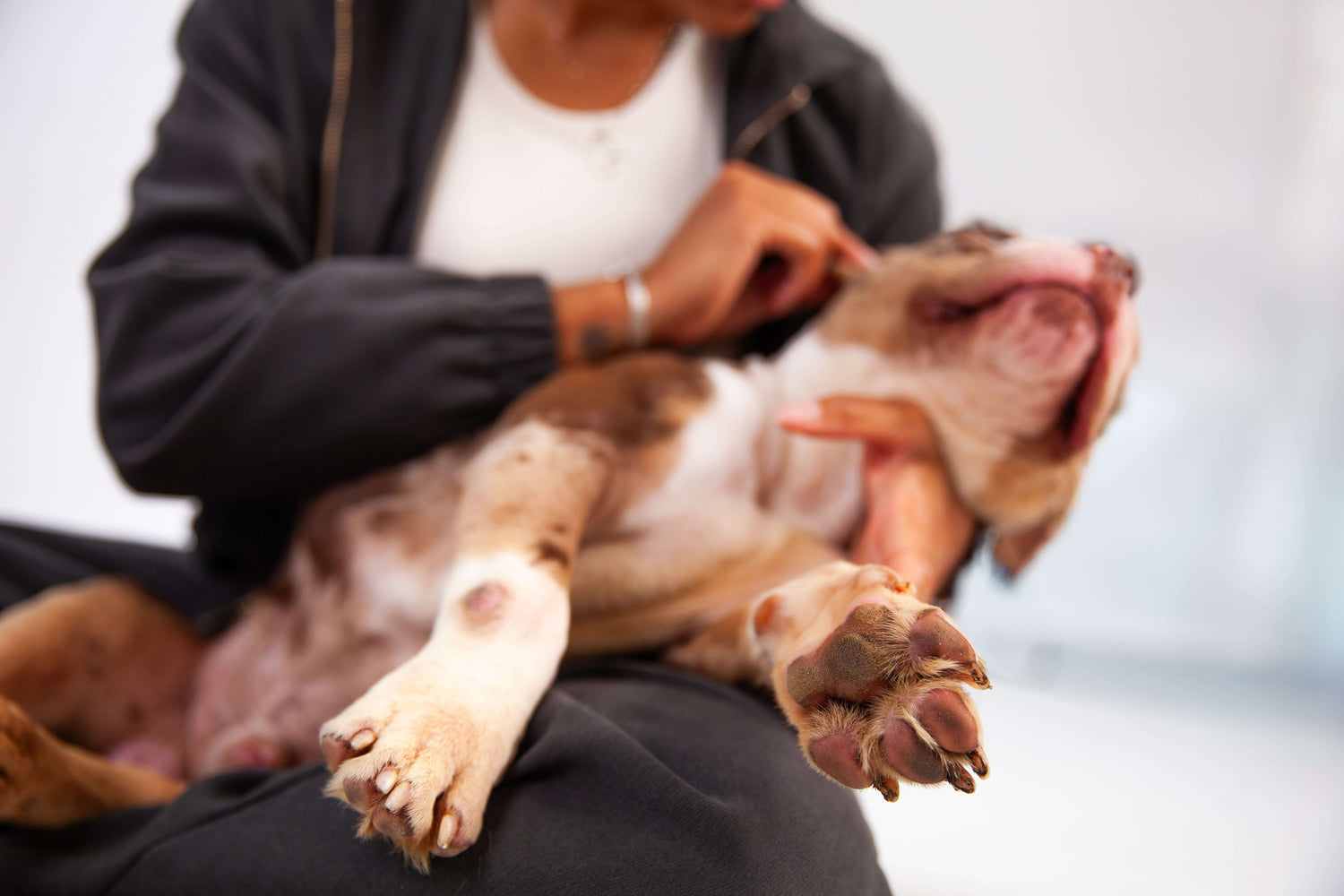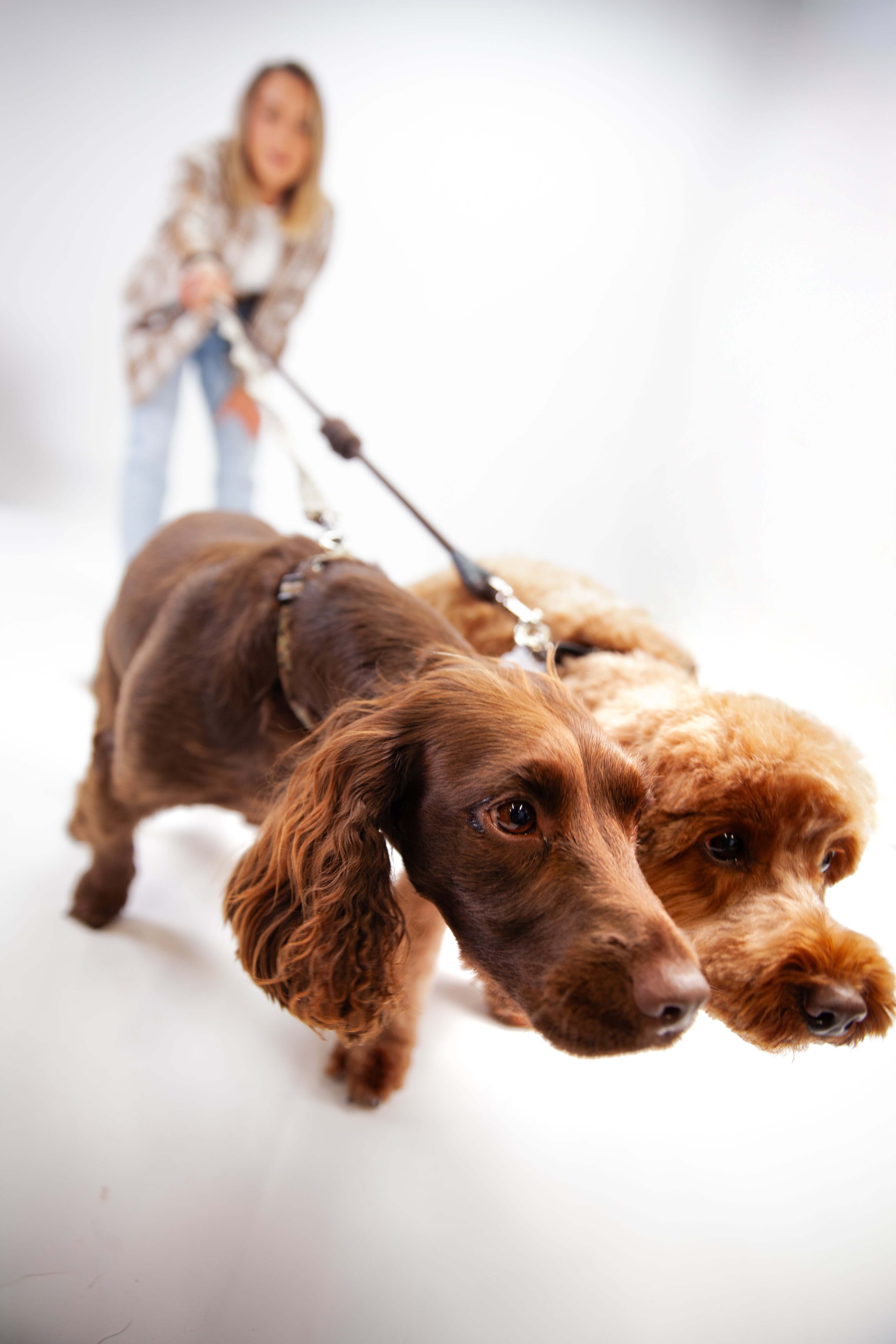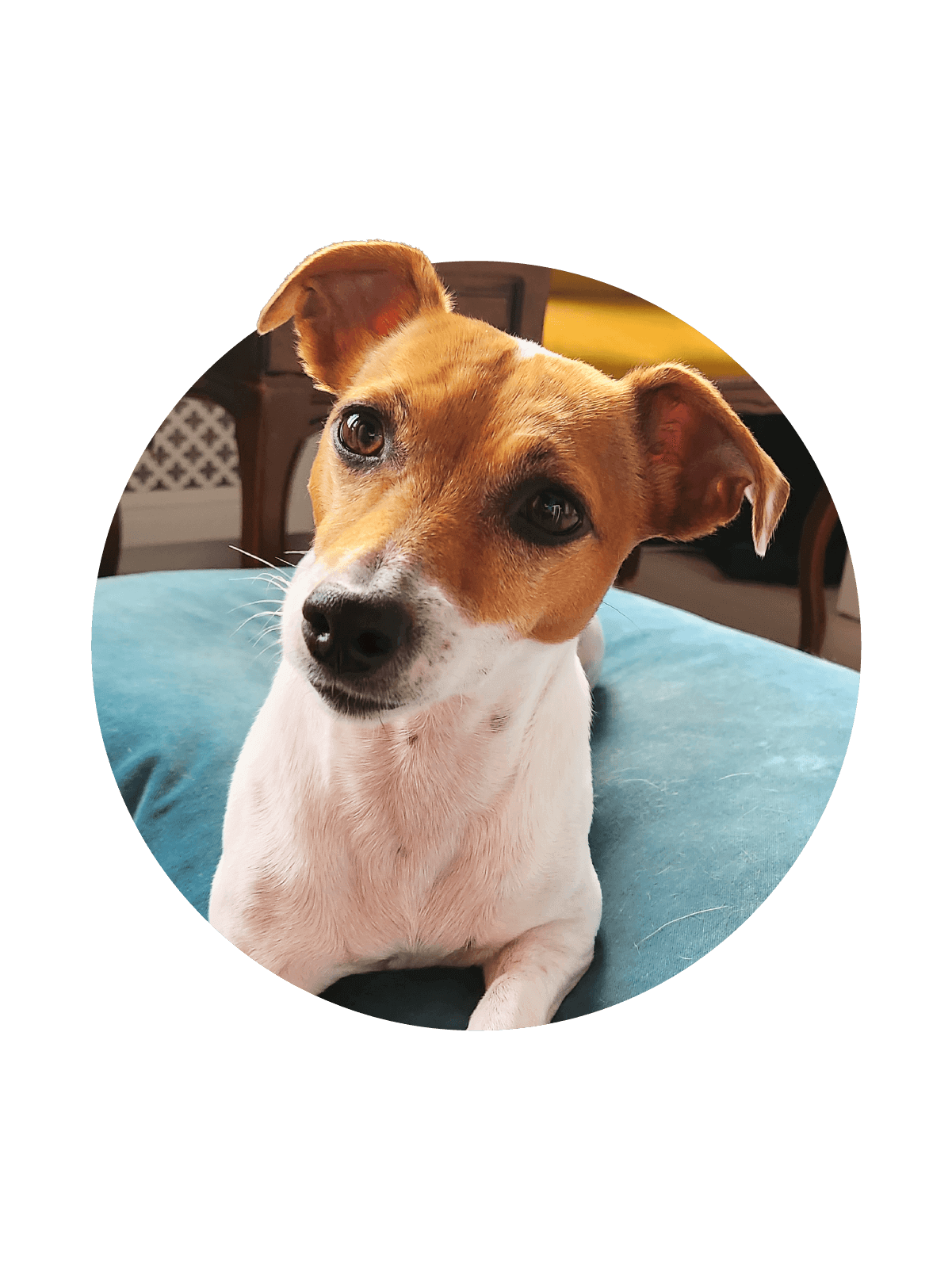Helping your dog or cat live a longer, healthier life—one meal at a time.
Many pet owners show love with treats and extra helpings—but all that generosity can add up. According to recent UK studies, over 50% of dogs and 44% of cats are overweight or obese. When we asked our pet owning community only 5% replied saying they thought their pet was overweight. This represents a huge difference in perception vs reality. Why is this important? While a little extra fluff might seem harmless, pet obesity can lead to serious health issues and shorten your pet’s life.
Based on our expertise we have created this helpful guide to help you with the following: how to tell if your pet is overweight, the dangers of obesity, how to use body condition scores for dogs and cats, and what to do if your pet needs to lose weight.
How to Tell if Your Pet Is Overweight
Here are some common signs that your dog or cat may be carrying excess weight:
- You can’t easily feel their ribs through a light layer of fat
- They have a sagging belly or no visible waist
- They are reluctant to exercise or tire quickly
- They struggle to jump up, go up stairs, or groom themselves (especially in cats)
- Their collar or harness fits more snugly than it used to
Even small weight gains can put a strain on your pet’s health—particularly in smaller breeds and older animals.
The Dangers of Obesity in Pets
Being overweight increases the risk of a range of health problems, including:
- Arthritis and joint issues
- Diabetes mellitus (especially in cats)
- Heart disease
- Breathing difficulties
- Urinary tract issues
- Skin problems
- Shortened life expectancy
According to the PDSA Animal Wellbeing Report, many pet owners don't realise their pet is overweight until health problems emerge—making early action all the more important. As we always say at DotDotPet prevention is much better than a cure (its often cheaper too!). Adding in healthy supplements like DotDotPet's Multifits instead of treats can be a great way to keep your pet in top condition and help keep the weight off!
Understanding Body Condition Scores (BCS)
The Body Condition Score (BCS) is a vet-approved method to assess your pet’s body fat, usually on a 9-point scale:
- 1–3: Underweight
- 4–5: Ideal
- 6–9: Overweight to obese
For Dogs:
- You should be able to feel the ribs easily without pressing too hard.
- From above, your dog should have a visible waist behind the ribs.
- From the side, there should be a slight abdominal tuck—not a flat or bulging belly.
For Cats:
- You should be able to feel ribs and spine under a light fat covering.
- Cats should have a noticeable waist when viewed from above.
- A small belly pouch is normal, but it shouldn’t be large or swinging.
Ask your vet to show you how to assess your pet's BCS during your next visit—or look for printable BCS charts from organisations like the WSAVA (World Small Animal Veterinary Association).
What a Healthy Pet Should Feel Like
Use your hands as a guide:
- Feel along your pet’s ribs—they should feel like the back of your hand (bony, but not sharp).
- Look for a waist when viewing from above—a clear tuck-in behind the ribs.
- Check the tummy from the side—it should slope upward rather than hanging down.
If your pet feels more like a cushion than a companion, it may be time to make a few changes.
What to Do If You Think Your Pet Is Overweight
-
Book a Vet Visit:
Your vet or vet nurse can confirm your pet’s ideal weight, rule out medical causes like thyroid disease, and help you build a safe, gradual weight loss plan. -
Change of diet:
Depending on how overweight your pet is, your vet or vet nurse may recommend a complete change of diet as there are specific diets designed to help with weight loss. Whenever changing your pet’s diet it is important to do it gradually. -
Weigh Food Portions Carefully:
Use a kitchen scale for precise meal portions. Feeding guidelines are a starting point—your vet can adjust based on breed, age, and activity level. -
Limit Treats & Table Scraps:
Treats should make up no more than 10% of your pet’s daily calories. Choose low-fat options or try healthy alternatives like pet supplements, carrot sticks or bits of apple (no seeds!). -
Increase Daily Exercise:
For dogs, try extra walks, fetch, or low-impact swimming. For cats, interactive toys or short play sessions throughout the day can boost activity levels. -
Track Progress:
Weigh your pet every 2–4 weeks. Weight loss should be gradual: around 1% of body weight per week is considered safe.
Our Final Thoughts
Helping your pet reach and maintain a healthy weight is one of the best gifts you can give them. It boosts energy, reduces the risk of disease, and can add years to their life. If you're concerned, take the first step by speaking with your vet—and remember, even small changes can lead to big improvements.



Leave a comment
All comments are moderated before being published.
This site is protected by hCaptcha and the hCaptcha Privacy Policy and Terms of Service apply.